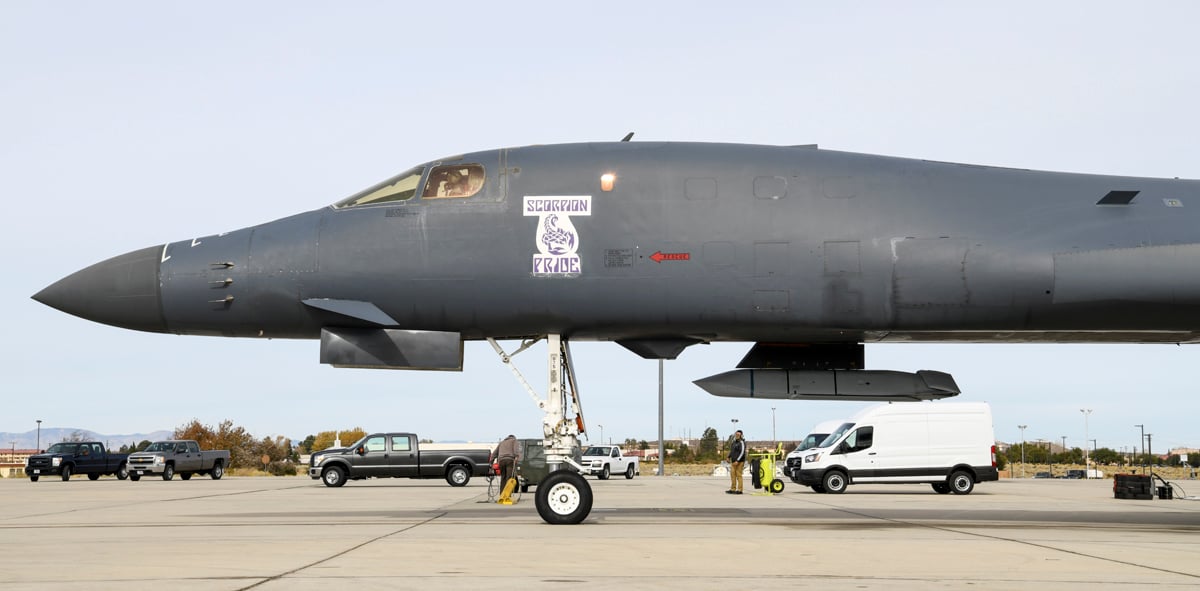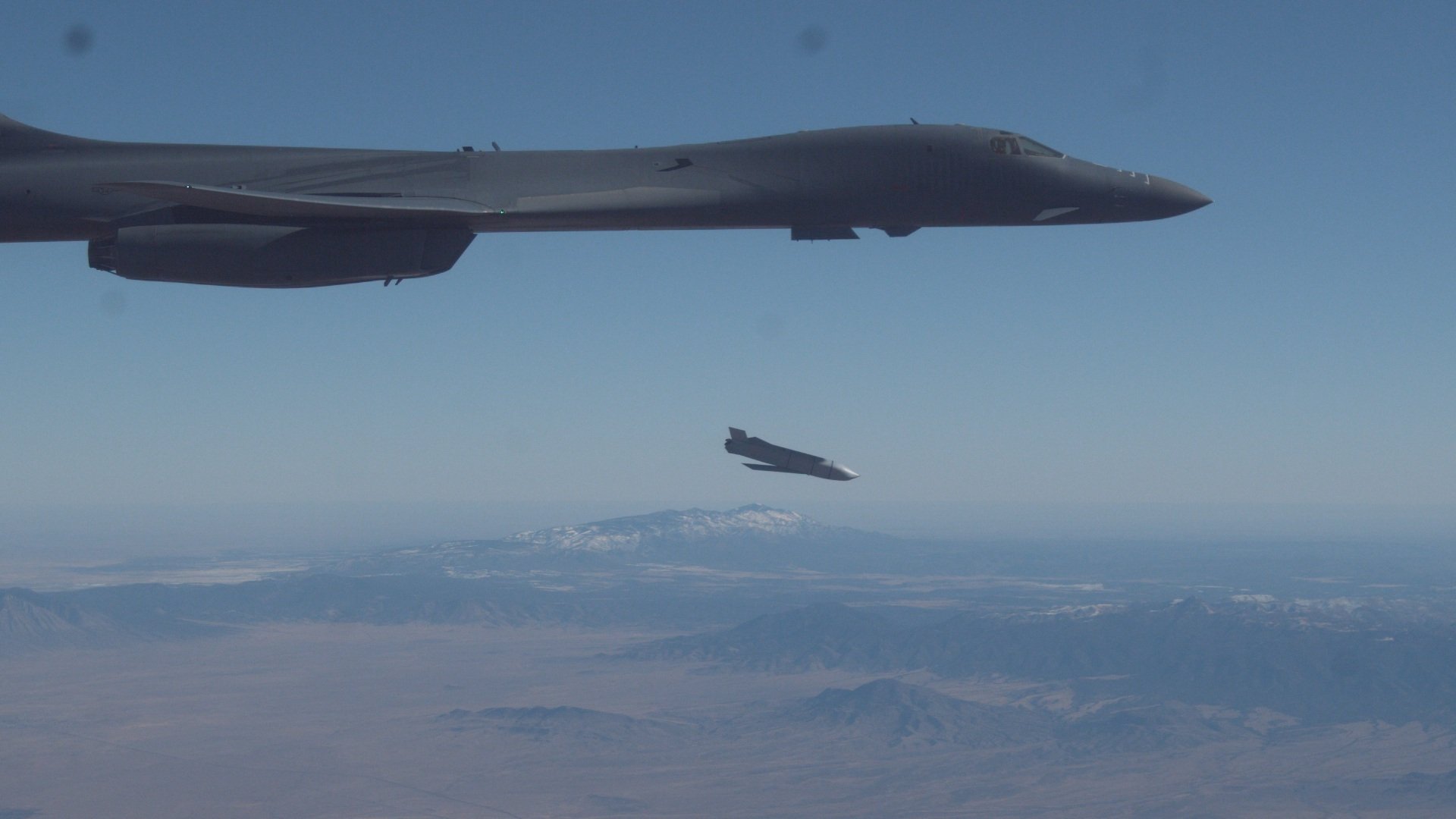Click Here to View This Page on Production Frontend
Click Here to Export Node Content
Click Here to View Printer-Friendly Version (Raw Backend)
Note: front-end display has links to styled print versions.
Content Node ID: 403131
The U.S. Air Force's Global Power Combined Test Force has conducted a test flight with a Boeing B-1B Lancer carrying an inert Lockheed Martin AGM-158 Joint Air-to-Surface Standoff Missile (JASSM) on an external pylon. The flight was performed on November 20 by an aircraft from the 419th Flight Test Squadron at Edwards Air Force Base (AFB).
Although this was a captive-carry test of an inert weapon, the test marks the start of flight evaluation of external carriage as part of the effort to expand the B-1B’s capability. It follows a series of ground tests that not only validated the aircraft’s external carriage capability but also the reconfiguration of the internal weapons bay to accept large missiles.
“We’re essentially displaying our external weapons carriage capability,” said Major Bret Cunningham, a B-1B test pilot with the 419th FLTS. “We have a JASSM weapon on what is traditionally the targeting pod pylon on the forward right hardpoint, so we are demonstrating that the B-1 has the capability to carry weapons and employ them externally."

A key aim of the program is to prepare the B-1B for the possible carriage of large hypersonic missiles such as the AGM-183A Air-Launched Rapid Response Weapon in the future. Theoretically, a B-1B could carry 31 of these missiles.
“Adapting a small number of our healthiest B-1s to carry hypersonic weapons is vital to bridge between the bomber force we have today, to the force of tomorrow,” said General Tim Ray, Air Force Global Strike Command commander. “This is a major step forward in our global precision fires capability and it is important we pursue these technologies to remain ahead of our competitors. My goal is to have a limited number of B-1s modified to become the roving linebacker of the western Pacific and the North Atlantic.”
B-1Bs were delivered with the ability to carry missiles externally on six under-fuselage hardpoints that could each mount two nuclear AGM-129 Advanced Cruise Missiles (ACMs). Moreover, the forward internal weapons bay had a moveable bulkhead that allowed it to accommodate either four ACMs or eight AGM-86B Air-Launched Cruise Missiles on a rotary launcher. In the event only the internal carriage system was adopted, but in 1994 the B-1B’s nuclear mission was dropped altogether and the "long bay" layout became redundant. The aircraft were further modified between 2007 and 2011 to physically remove nuclear capability in line with the New START arms reduction treaty. The current expanded carriage program remains within the restrictions of that agreement.
To date only the forward starboard external hardpoint has been reactivated, as a mount for the AAQ-33 Sniper XR targeting pod. The recent captive-carry test is a prelude to forthcoming release trials, after which it is expected that additional hardpoints will be reactivated and tested, as well as release trials from the “long-bay” internal configuration.
Rockwell (now Boeing) delivered 100 B-1Bs to the Air Force in the 1980s. Following retirements, 62 are now in service with four squadrons, divided between the 7th Bomb Wing at Dyess AFB, Texas, and the 28th Bomb Wing at Ellsworth AFB, South Dakota, with a few flown by trials units. A further 17 aging airframes are due to be retired in 2021, with no reduction in the number of squadrons. The B-1B is to be progressively replaced by the Northrop Grumman B-21 Raider, and the last “Bone” is scheduled for retirement in 2036.
UPDATE: The 419th FLTS demonstrated the safe release of an inert AGM-158 JASSM missile from the external pylon for the first time on Dec. 4 at Holloman AFB, New Mexico.
